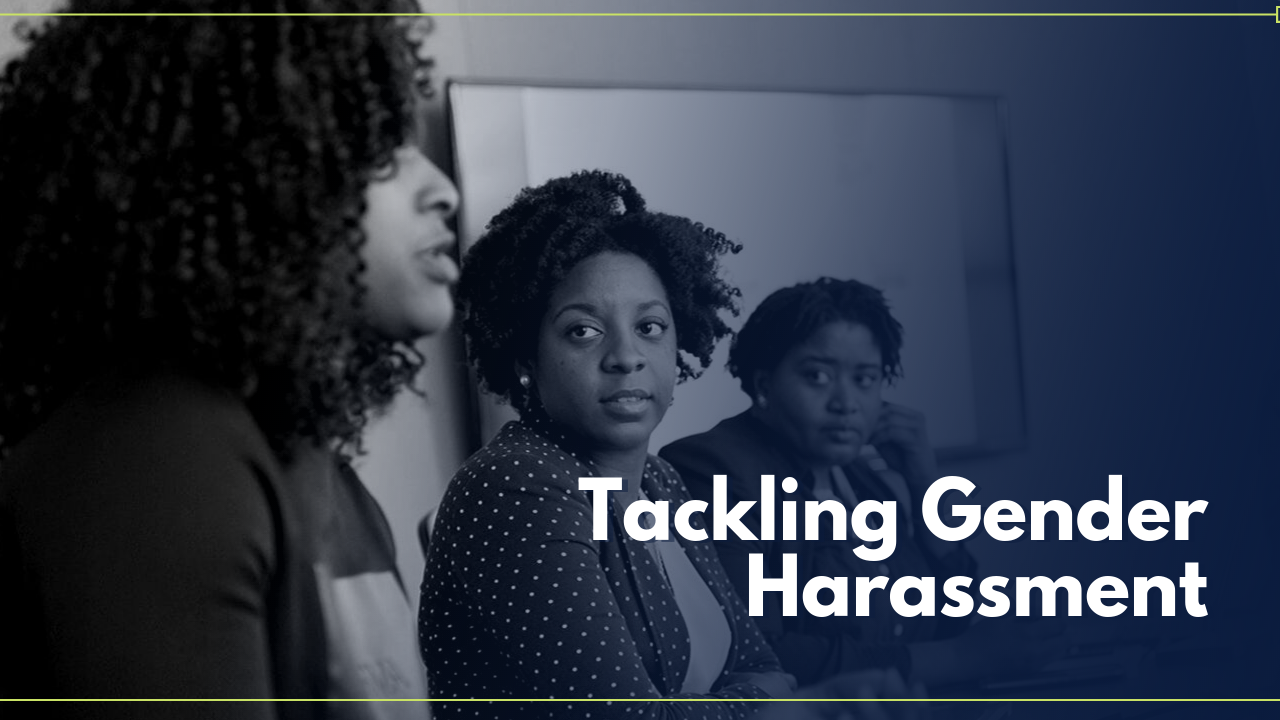- A survey found that approximately 80% of women in the US have experienced some sort of sexual harassment in the workplace.
- Sexual harassment has many forms and it has a deep negative effect on the recipient’s mental health and wellbeing.
- Greater awareness of sexual harassment including movements such as #MeToo and #TimesUp are encouraging companies to do more to create a psychologically safe space for its workforce.
According to a 2017 survey, approximately 80% of women in the US report experiencing some sort of sexual harassment in the workplace. Other studies have found that even at relatively low frequencies, harassment in the workplace exerts significant negative impact on a woman’s psychological wellbeing; including decrements in general mental health, depression and anxiety disorders, increased alcohol abuse, elevated risk of eating disorders, and symptoms of post-traumatic stress disorder.
Though individual deviance plays a role in whether a person engages in this type of behavior, it is now largely accepted in the scientific community that “it is organizational conditions rather than individual characteristics that are the most powerful predictors of sexual harassment” in the workplace.
Workplace Culture: The State of Gender Harassment
A recent report found that “culture is what attracts and retains employees.” But culture is not something that simply happens; it needs to be actively developed and nurtured. Otherwise, you risk creating a toxic workplace environment that people do not want to be in, and in some cases, do not feel safe in.
Cultures that tolerate any form of sexual harassment are negatively impacting the health and wellbeing of employees.
Sexual harassment encompasses three dimensions: gender harassment, unwanted sexual attention, and sexual coercion, where gender harassment involves negative treatment of women that is not necessarily sexual. Unwanted sexual attention includes coworker or supervisor behaviors such as staring, leering, ogling, or unwanted touching; and sexual coercion includes bribing or pressuring women to engage in sexual behavior.
A recent survey found that although fewer women report sexual coercion and unwanted sexual attention occurrences following the #MeToo movement, there has been an increase in reports of gender harassment. In 2016, 25% of women reported being sexually coerced; by 2018 that number had dropped to 16%. Similarly, unwanted sexual attention fell from 66% to 25% in the same timespan.
Unfortunately, gender harassment incidents increased from 76% in 2016 to 92% in 2018, pointing to “an increase in hostility towards women” in the workplace characterized by making sexist remarks, sharing inappropriate stories, or displaying sexist material. Though gender harassment is often seen as the least egregious form of harassment, it remains the most pervasive and it has a deep negative effect on the mental health of women.
The good news is that the relationship between gender harassment and self-esteem and self-doubt has decreased. Specifically, the survey found that “there was not a significant interaction between year and gender harassment in predicting self-esteem.” The survey also found that while in 2016, gender harassment while positively related to self-doubt, that effect was reduced significantly by 2018.
Tackling Gender Harassment by Creating Psychologically Safe Workplaces
Psychological safety is about creating a workplace environment where people are comfortable being and expressing themselves. It also requires that a company look into any circumstances that it has control of and examine how it impacts an employee’s comfort and wellbeing.
Suggested Reading: “Creating Psychologically Safe Workplaces: A Q&A with Camille Wilson, Founder of Grow Together Now”
Speaking about the survey findings, Liz Elting, Founder and CEO of the Elizabeth Elting Foundation – “a foundation that is committed to promoting progressive and feminist efforts to eradicate systemic barriers, promote public health and education, achieve workplace equality, rise beyond the glass ceiling, and open the doors to economic independence for those society has far too often shut out” – takes a positive point of view.
“I think it is unclear whether we are actually seeing an increase in sexism or if it is just that women are more conscious of it, and therefore we are seeing increased reporting.”
If Elting is right, “this is a positive thing,” because it means that “women are more aware of the type of treatment they deserve” and that companies are heading in the right direction towards creating a psychologically safe space for women. This is something that companies need to cultivate and grow.
Elting and the survey authors believe that movements like #MeToo and #TimesUp have contributed to companies taking sexual harassment more seriously. Not only are these movements helping to change a deeply ingrained behavior, but they are also helping women better deal with negative experiences.
According to the survey authors, “the increased disclosure and knowledge of the pervasiveness of sexual harassment will buffer women from the negative impact of sexual harassment by demonstrating to women who have been harassed that they are not alone and are supported by other women.”


 Dr. Gleb Tsipursky – The Office Whisperer
Dr. Gleb Tsipursky – The Office Whisperer Nirit Cohen – WorkFutures
Nirit Cohen – WorkFutures Angela Howard – Culture Expert
Angela Howard – Culture Expert Drew Jones – Design & Innovation
Drew Jones – Design & Innovation Jonathan Price – CRE & Flex Expert
Jonathan Price – CRE & Flex Expert












